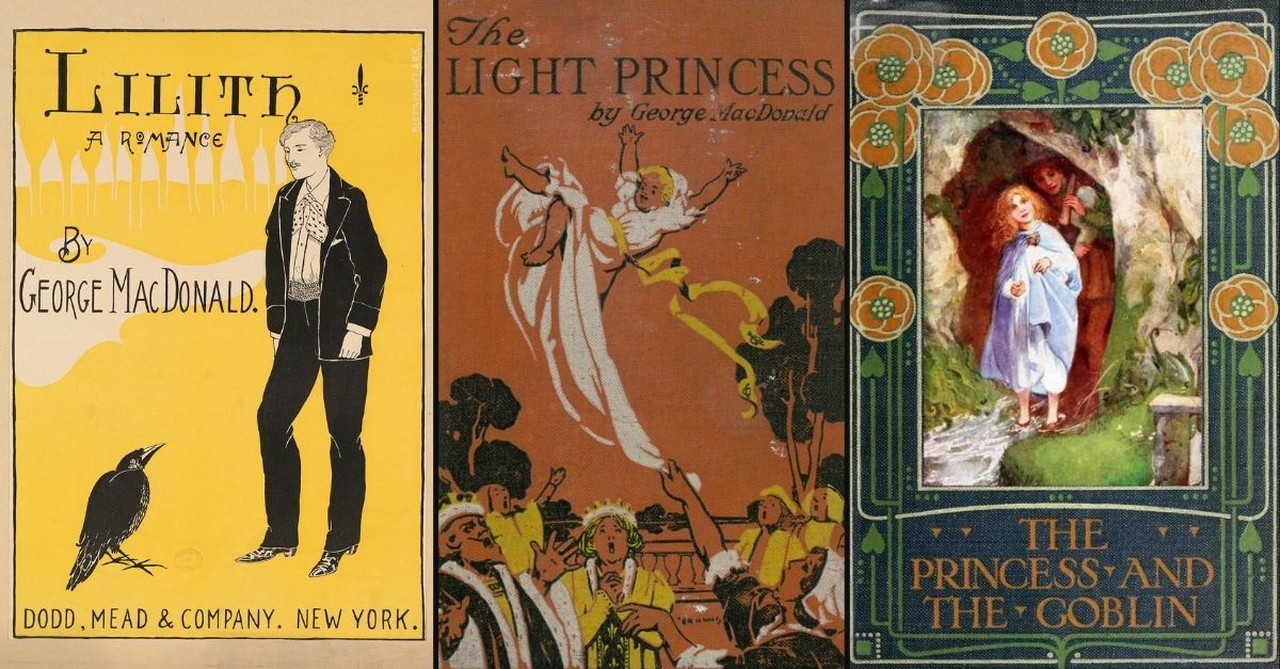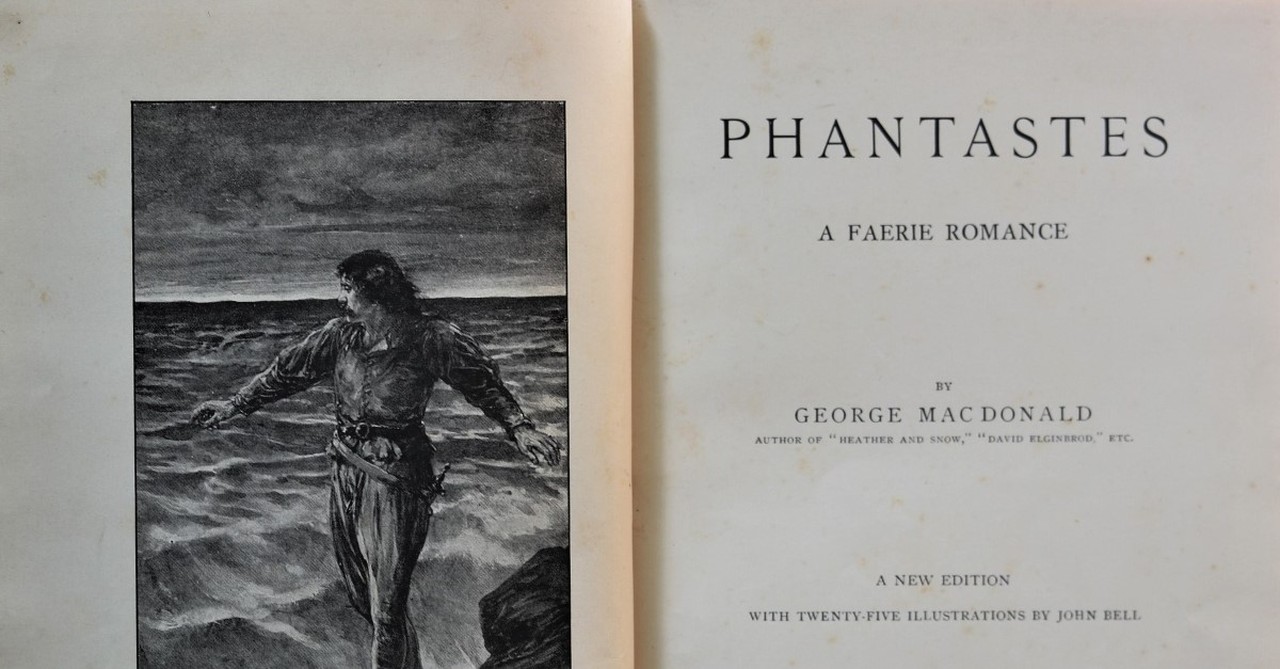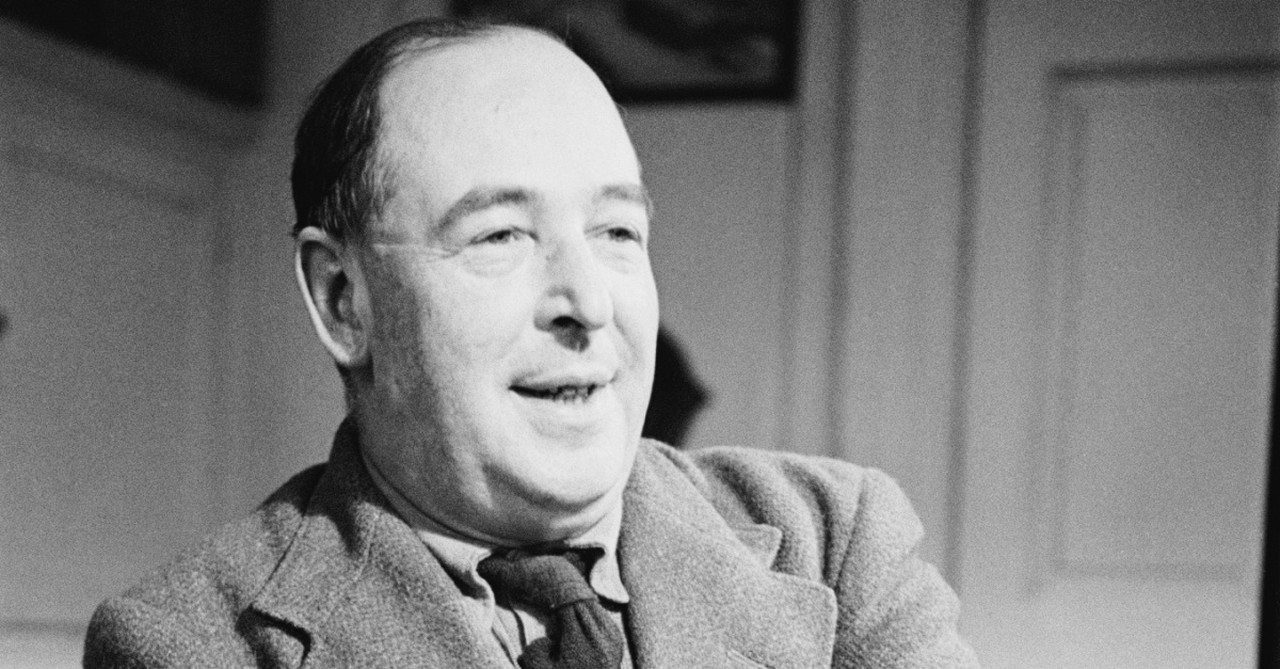What Can We Learn from George MacDonald’s Phantastes?

The fantasy novel Phantastes has influenced many writers, but had a particularly profound impact on the spiritual journey of C.S. Lewis.
How did this book, published in 1858, influence Lewis’ journey from atheism, theism, to Christianity?
Photo Credit: © Getty Images/RoterPanther
What Do We Know about the Author of Phantastes?

What Do We Know about the Author of Phantastes?
SLIDE 1 OF 6
George MacDonald was born in Scotland on December 10, 1824. He suffered the loss of his mother at the age of eight and was raised by his father, George MacDonald, Sr. Though MacDonald was thankful to have been raised in the Church, he rejected the Calvinism of Protestant theologians John Calvin and John Knox, the predominant theological paradigm in Scotland at the time.
MacDonald found the either/or of Calvinism and Arminianism to be a false dichotomy and saw no contradiction between the sovereign grace of Christ and a human being’s free will. MacDonald believed that Jesus of Nazareth came to rescue humanity not to satisfy a wrathful deity but because He loves all humanity with an agape love. This was MacDonald’s theology of the atonement.
As a young man, MacDonald delighted in reading the Bible, Scottish folktales, Celtic myths, and works like Dante Alighieri’s The Divine Comedy, John Bunyan’s The Pilgrim’s Progress, John Milton’s Paradise Lost, and the poetry of John Keats, Percy Shelley, and Robert Burns. In his twenties, MacDonald felt a call to become a minister. MacDonald received his theological education at King’s College in Aberdeen, Scotland, and Highbury Seminary in London, England. He became a pastor in the English town of Arundel.
However, the ministry path took him in an unexpected direction.
Further Reading: 15 Classic Christian Fantasy Books for Kids and Adults
Photo Credit: Public domain (1863 photo by Lewis Carroll)
How Did George MacDonald Go from Being a Pastor to a Writer?

How Did George MacDonald Go from Being a Pastor to a Writer?
SLIDE 2 OF 6
As MacDonald expert Kirstin Jeffrey Johnson explains, he did not have a stable career as a minister partly because of his unconventional theological views and partly because of the congregation he was attempting to serve in Arundel, England. The two pastors who served before him were fired, and MacDonald resigned because he could not afford to support his family off of such low wages.
MacDonald’s theological views were controversial since he believed that animals have souls, rejected the doctrines of biblical inerrancy and substitutionary atonement, and believed that all, in the end, might be saved even if it took purifying hellfire. MacDonald expressed his theological views in books like Unspoken Sermons (published in several volumes between 1867 and 1889).
What did MacDonald believe about Scripture and Christ’s atonement? MacDonald believed in the divine inspiration of Scripture but saw Jesus of Nazareth as the true word of God and saw atonement theories as distractions from the reality of Jesus displaying agape love through his Incarnation, Death, and Resurrection in the first century. In this context, Christ came to rescue all humanity and not simply for the elect.
Despite criticism from the evangelicals of his day who had issues with his theology, MacDonald reflected the agape love of Christ in his writings and life. His literary legacy has helped bring many people to Christ who have had negative experiences with a fundamentalist upbringing and organized religion.
Unable to make a living as a pastor, MacDonald turned to lecturing, tutoring, and writing. MacDonald married Louisa Powell in 1851. Together, they had 11 children and lived their final years in Italy because of MacDonald’s lung health issues.
MacDonald wrote over 50 books, leaving behind a great literary legacy. His writing included novels, poetry, fairy tales, and two fantasy novels. MacDonald’s best-known fairy tale today is The Princess and The Goblin. His writings have influenced great writers like G.K. Chesterton, C.S. Lewis, Madeleine L’Engle, J.R.R. Tolkien, Joy Davidman, Ursula K. Le Guin, Dorothy L. Sayers, and Neil Gaiman.
Further Reading: 100 Best Christian Books of All Time
Photo Credit: Public Domain photos via Wikimedia Commons
What Is the Plot of Phantastes?

What Is the Plot of Phantastes?
SLIDE 3 OF 6
The fantasy novel opens with the main character, Anodos, encountering a fairy woman on his 21st birthday. She tells him he will soon journey to the realm of Faerie on an adventure. The next morning, Anodos finds himself not in the world of mortal human beings but in Faerie, as prophesied by the fairy woman.
Anodos travels through the forest, encountering beings of all shapes and sizes. The first encounter with danger Anodos has is with the evil ash tree. The lady of the beech tree saves him from being devoured by the malicious being. The beech tree dryad becomes Anodos’ ideal of beauty throughout the story. As he searches for his ideal beauty, Anodos is deceived many times, suffering the ramifications of giving into his false idealism.
Before Anodos returns to the mortal realm, he finds himself at a ceremony where a sacrifice is being performed by people dressed in white hooded garments. Sensing that something evil is happening, Anodos breaks the idol. A malicious wolf is revealed to be the demonic creature being appeased by the cult. Anados dies while attempting to stop the evil being. In this self-sacrificial act, Anodos learns what it truly means to surrender one’s pride in an act of compassion reflecting Christ’s agape love.
Further Reading: 100 Christian Novels You Haven't Read Yet
Photo Credit: Public domain photo via Wikimedia Commons
Is Phantastes a Religious Allegory?

Is Phantastes a Religious Allegory?
SLIDE 4 OF 6
Readers have often discussed MacDonald’s fairy tales as allegories and can certainly interpret Phantastes allegorically. For example, Anados’ journey through the realm of Faerie back to the mortal realm can be interpreted as a symbol of the soul’s journey to surrender to Christ: a death to self to experience abundant life.
The Fairy woman Anodos encounters in the cottage after he experiences failure and grief, who consoles and helps him finish his quest, could be interpreted as a Christ-like archetype.
In his biography about his father, George MacDonald And His Wife, Greville MacDonald makes an important point in the chapter about Phantastes that his father’s book can be interpreted allegorically but is very multilayered in its different themes and literary influences. Greville includes a quote from his father’s letter to Mrs. A.J. Scott, where MacDonald says, “I hope Mr. Scott will like my fairy-tale. I don’t see what right the Athenoeum has to call it an allegory and judge it or misjudge accordingly—as if nothing but an allegory could have two meanings!”
MacDonald’s motive in the story was to convey important theological truths that leave room for the reader to discover what those truths meant in the context of their own experience. In his essay “The Fantastic Imagination,” MacDonald conveys that myths and fairy tales communicate the deepest truths (and not just through allegory). The truths conveyed are embedded in the narrative for the reader to discover and affect readers’ hearts and minds in different ways. The late MacDonald scholar Rolland Hein conceded this in many of his writings about MacDonald.
Photo Credit: Does the Bible Contain Allegory?
Photo Credit: Pexels.com
How Did Phantastes Influence C.S. Lewis?

How Did Phantastes Influence C.S. Lewis?
SLIDE 5 OF 6
While at a train station in England, the 16-year-old C.S. Lewis happened to pick up a copy of Phantastes. At this point in his life, Lewis had become an atheist, rejecting Christianity on historical and existential grounds. After reading the fantasy novel, Lewis described it as “baptizing my imagination,” helping him to see ordinary things as wondrous. Lewis’ profound encounter with the book sowed the seed for his embracing faith in Christ years later at 32.
Lewis conveyed how Phantastes changed his outlook in many writings—including his autobiography Surprised by Joy, his foreword to George MacDonald: An Anthology, and many of his letters. He described how the sense of holiness experienced from reading the fairy tale could not rationalized as something escapist or wishful thinking.
The book connected to Lewis’ transcendent experiences of joy, and those factors pushed him to recognize the limits of logical positivism. Logical positivism assumes that only statements that can be proven with facts and logic are correct. Lewis’ experiences reading Phantastes and other works and various nature experiences that left him with a spiritual longing pushed him to realize there must be more to life than just what he could logically prove.
Lewis’ tutor, dialectician William Kirkpatrick, had trained him to understand the laws of logic, different views on metaphysics, ethics, religion, and the importance of intellectual and emotional honesty. This honest philosophical approach made Lewis reconsider his views, given how experiences like reading Phantastes affected him.
Over time, admitting that logical positivism was not enough and conversations with Christian friends like Hugo Dyson and J.R.R. Tolkien led Lewis back to Christianity.
The poetry, mythology, and Christian virtues of faith, hope, and love conveyed in MacDonald’s Phantastes altered the trajectory of Lewis’ life. Lewis cited it in the top ten books that influenced his worldview.
Lewis would re-read Phantastes throughout his life and some of MacDonald’s other fantasy works, such as The Golden Key, Lilith, The Princess and The Goblin, At the Back of the North Wind, and The Day Boy and The Night Girl.
Further Reading: The Enduring Legacy of C.S. Lewis
Photo Credit: ©Getty Images/John Chillingworth/Stringer
How to Learn More about Phantastes

How to Learn More about Phantastes
SLIDE 6 OF 6
These are very insightful and helpful guides to Phantastes:
Phantastes: A Graphic Novel adapted by Meredith Finch, illustrated by Christine Norrie and Andrew Pepoy.
Phantastes: Annotated Edition edited by John Pennington and Roderick McGillis.
The Rabbit Room’s Phantastes Reading Group has posted videos of their readings and discussions about the book.
George MacDonald and His Wife by Greville MacDonald.
Dr. Kirstin Jeffrey Johnson provides some excellent thoughts on Phantastes in an interview for the podcast Pints With Jack.
Crossing A Great Frontier: Essays on George MacDonald’s Phantastes by John Pennington
Pennington contributed an essay to The Faithful Imagination edited by Joe Ricke and Ashley Chu, where he provides more details about Phantastes and his experience working with McGillis to create an annotated edition.
Publisher Wipf and Stock has published or re-released many books about George MacDonald, including The Theology of George MacDonald by John R. de Jung and George MacDonald’s Children’s Fantasies and the Divine Imagination by Colin Manlove.
Further Reading: 50 Christian Authors You Should Know
Photo Credit: ©Getty Images/Viorika
Justin Wiggins is an author who works and lives in the primitive, majestic, beautiful mountains of North Carolina. He graduated with his Bachelor's in English Literature, with a focus on C.S. Lewis studies, from Montreat College in May 2018. His first book was Surprised by Agape, published by Grant Hudson of Clarendon House Publications. His second book, Surprised By Myth, was co-written with Grant Hudson and published in 2021. Many of his recent books (Marty & Irene, Tír na nÓg, Celtic Twilight, Celtic Song, Ragnarok, Celtic Dawn) are published by Steve Cawte of Impspired.
Wiggins has also had poems and other short pieces published by Clarendon House Publications, Sehnsucht: The C.S. Lewis Journal, and Sweetycat Press. Justin has a great zeal for life, work, community, writing, literature, art, pubs, bookstores, coffee shops, and for England, Scotland, and Ireland.
Originally published September 08, 2023.









